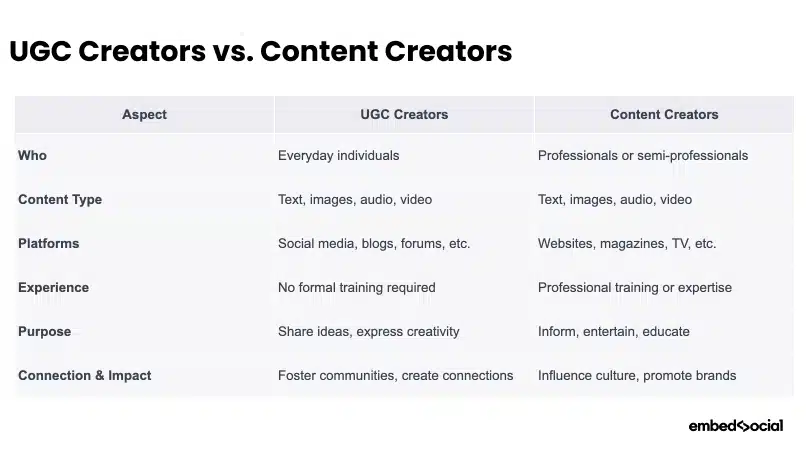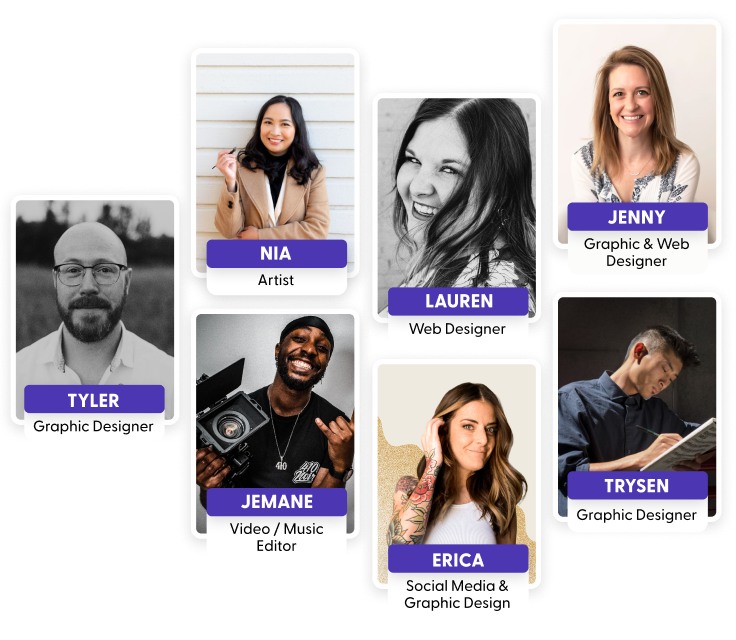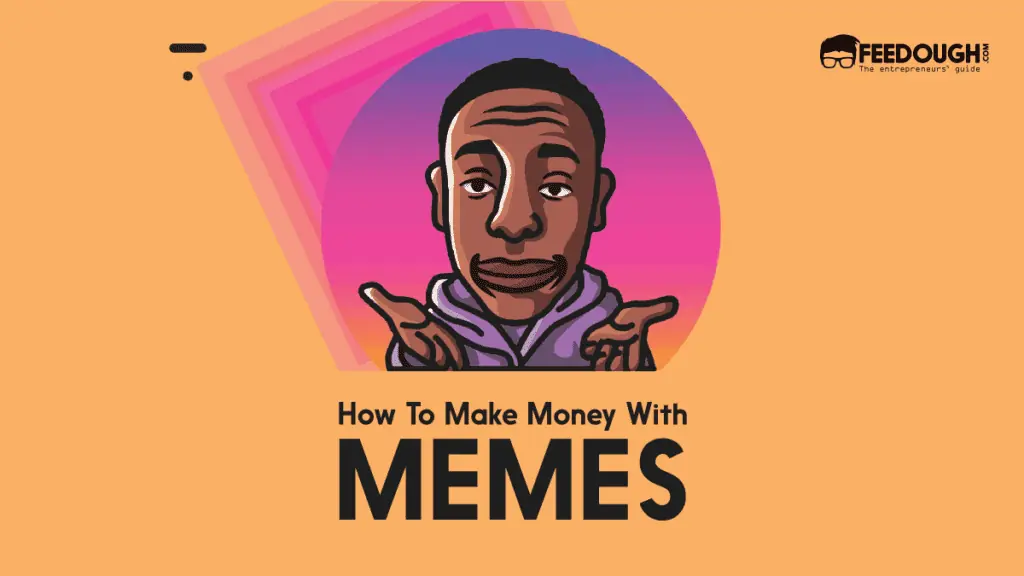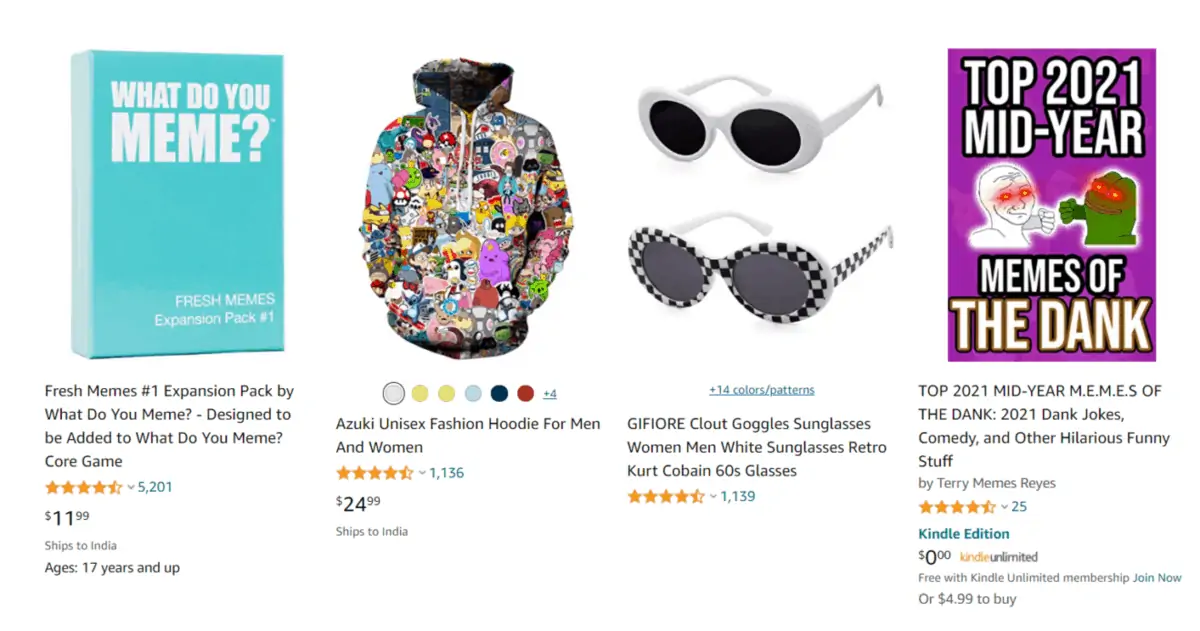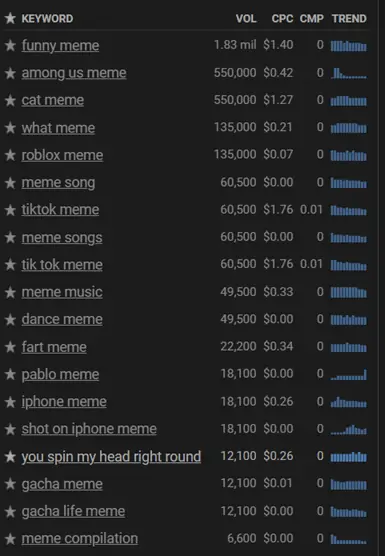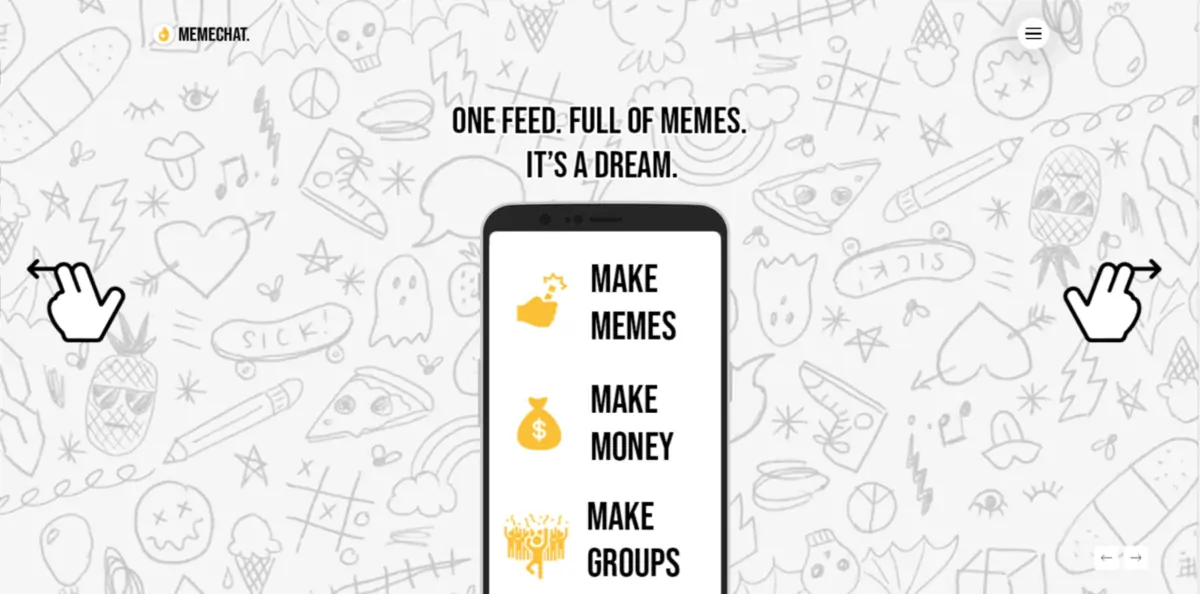What is a UGC Creator? Steps To Become One + Examples
Learn how to become a top UGC creator and generate engaging content for brands with our expert guide.
Making money on social media is a dream – that’s slowly but surely turning into a reality.
Selling online products/services, brand partnerships, subscription-based models, affiliate programs, influencer marketing, and monetizing off of user-generated content are all part of the UGC creator job.
Interested in learning how to become a UGC creator?
What is UGC?
Before explaining what UGC creator is – let’s cover some basics of what does UGC stand for:
UGC stands for User-Generated Content, a term that refers to a wide range of creative outputs created by everyday individuals rather than professionals.
User-generated content is content related to your brand but created by your real customers instead of employees.
If you are wondering why user-generated content instead of content created the usual way – UGC increases conversion by 10% in an online buying process.
This type of content includes text, images, audio, and video and can be found on numerous digital platforms.
The UGC meaning has become increasingly popular as it allows people to share their unique perspectives and talents with a global audience, often forming online communities and connections.
Furthermore, the growth of UGC has redefined content creation, making it more accessible and inclusive for people from all walks of life.
What is a UGC Creator?
Now, it’s only fair we move on to covering what a user-generated content creator is:
UGC creator is a content creator (as the name says it) who “specializes” in creating content that looks user-generated, personal, authentic, and unique to that person’s style – but of course, it’s sponsored (paid by a brand/company). This content is usually shared on the social media feeds of the creator, and it can be in the form of a photo or a video explaining the features of a certain product, its benefits, etc.
UGC Creators vs. Content Creators
In short, UGC creators are everyday individuals who create content to express their creativity and ideas, while content creators are professionals or semi-professionals who produce content to inform, entertain, or educate.
UGC creators primarily focus on building communities and connections, whereas content creators often aim to influence culture or promote brands. Here is a table with the main differences:
UGC Content Creators vs. Influencers
Often, these creators are confused with influencers who post on their social channels regarding certain products. However, the main difference here is where this content is posted.
Micro-influencers are getting paid to promote products to their target audience/ their community, influencing their purchasing decisions to buy that product. Additionally, brands are paying these influencers for their products to reach a broader audience (the one the influencer has).
UGC creators could create similar content even for that same brand, but the content will be posted on the brand’s channels. In this case, brands are not looking into raising awareness and higher reach of their products/services; instead – they are in it for the authentic feel of the content.
For example, we can take this reel posted on Sephora’s Instagram profile, where a fashion influencer explains her hair routine with versatile products and hair styling tools.
Benefits of working with UGC creators
As we’ve already mentioned – user-generated content increases conversions, and here are some UGC stats that confirm this:
- 75% of marketers claim that UGC makes the brand more authentic
- 31% of consumers say that ads containing authentic UGC content are more memorable than branded content ads; and that
- Consumers spend 5,4 hours a day with user-generated content.
- And finally, marketers don’t need to have a big marketing budget for UGC creation.
As you can tell, brands love user-generated content because it hugely impacts their marketing strategy – but why is that?
User-generated content is so impactful simply because it provides people with social proof. Social proof, on the other hand, works because people trust people and not brands directly. It’s as simple as when you get a certain recommendation from a friend about a certain product, and you’re instantly hooked and ready to try it out.
Content created by UG creators is more engaging, trustworthy, and with higher credibility.
Other than this, content created by UG creators will help you:
- save valuable time and money (content creation can frequently be expensive and time-consuming to create)
- showcase your brand is open to communicating with your audience (this type of content will help you create a stronger bond with your audience)
- personality-based original videos/content with real people are preferred by social media algorithms meaning this content will get a higher reach (get through to more social media accounts and profiles)
Now that we’ve answered the “what” and the “why,” – it’s only fair we move on to the “how” – how to become a UGC creator.
How to Become a UGC Creator? (5 steps)
Becoming a UGC Creator is fairly simple – a huge follower count is not required, nor high engagement levels.
Why? Simply because you’re not influencing people your audience but the audience of the brand you’re creating for (because the content will be published on their profile). Even more, you won’t need special equipment to create this content.
So, what exactly do you need? Here are the exact steps if you’re starting on:
- Create your UGC-specific account
- Understand the UGC landscape
- Plan your UGC strategy
- Create high-quality UGC
- Build your UGC portfolio
- Collaborate and reach out to brands
1. Create your UGC-specific account
Create an account on the platform(s) that align with your content goals. Choose a username that reflects your brand or niche, and complete your profile with a compelling bio and relevant details.
Creating a different account will allow you to separate your personal from your “brand” account for privacy reasons. Additionally, creating an account with UGC usage in the description and/or name will help brands discover you faster and easier.
Once you create your account, you can start following other creators sharing tips, knowledge, and experience about the creator economy, how to make contacts, and how to get your first earnings as a creator.
Don’t be scared to reach out to other creators, and engage with the UGC creator community – you never know with who you might start collaborating.
Skills you need to become a creator:
- Video and photo creation and editing skills
- Copywriting for writing cool captions and scripts for creating UGC videos
- Live communication
- Research Skills are always a plus
- Basic marketing knowledge (understanding how sales funnels work + e-mail marketing + how social media channels and algorithms work)
2. Understand the UGC landscape
Now that you have your account, it’s time to start thinking about what industry you want to work in.
Before diving into UGC creation, familiarize yourself with the industry and platforms you wish to engage with. Research popular UGC trends, target audience preferences, and the specific platform’s guidelines.
Surely, you’re starting something new, and it might be scary – but no need to; when we’re talking “industry,” we actually refer to your interests (other than your nine-to-five job). You might be interested in skincare, tech, fashion, wellness, food, sports, books, productivity and planning, and so much more! The options are truly endless!
Once you write down your interests – go a step further, and think about brands you would like to collaborate with. Who are they – do write them down too. Now that you have your potential brand list – it’s time for some research.
Go into these brands’ social accounts and see what type of content they are posting, whether they include UGCs, what’s their most common content format, who their audience is, and how you can improve their content strategy.
Here is a list of niches you can consider:
Cooking / Recipes – do you have a cooking talent? You can consider creating your profile around a specific cooking niche, like vegan, food for kids, etc. The key here is to choose a very narrow topic that you are good at but is not very competitive.
Fitness / Wellness – of course, this is a very broad industry, but what about fitness for mums, fitness in the morning, and 10-minute fitness, try to research and see if any of the fitness alternatives are worth considering.
Skincare – is another super popular and demanded sector, and it might be perfect for you if you are on a certain skincare path, have a certain skincare issue, and you’re learning to cope with it with the right products/treatments/lifestyle, and even if you don’t have a skin issue – the industry is so large there’s space for every skincare enthusiast.
Fashion – passionate about dressing up? Do showcase your daily combinations, what you would wear on certain occasions, your favorite shopping hauls, seasonal wear, and must-haves for every season, and share comments on famous people’s combinations – experiment with content and find that thing that works for you and land those collaborations and paid content creations!
Books – regardless of how strange it might look – if that’s your interest, yes! There’s even space for such niche communities about people reading certain types of books, writing and sharing reviews, and sharing that unique book aesthetics (with underlined pages, side notes, and drawings on pages).
Productivity / Work Motivation – maybe you’re good at explaining to others how to excel in their career, be more productive, structure their day, prioritize their tasks, etc. Maybe this is something you’ve been working on yourself for years – and now it’s the absolute best time to literally make a living out of it (out of everything you’ve learned in your spare time).
Do stick with us – we will cover some helpful examples too 🙂
3. Plan Your UGC Strategy
Define your content objectives, themes, and posting frequency. Consider the interests of your target audience and craft content that resonates with them.
Planning ahead ensures consistency and a steady stream of engaging UGC.
4. Create high-quality UGC
Now that you have your main interests written down – you need to think about the type of content you want to focus on.
Focus on producing unique and high-quality content that captivates your audience. Use a variety of formats, such as photos, videos, or written posts, to diversify your content and cater to different preferences.
Are you more interested in creating photos, personal short-form videos, or short-form reels for both Instagram and TikTok? Think about this, take some courses to educate yourself if needed, and start creating.
Although it might be scary, starting to create authentic content and simply “being out there” is essential to becoming a creator. Creating content will help you with the next step, building your UGC portfolio.
5. Build your UGC portfolio
Compile your best UGC pieces into a cohesive portfolio. Showcase your creativity, skills, and unique perspective. This portfolio will serve as a compelling representation of your capabilities when collaborating with brands or seeking opportunities.
Creating a portfolio will help you showcase who you are, what you do – your previous work, and how you could help brands with content.
Here are a few resources to help you create your portfolio:
- how to create your portfolio in Canva
- what to put in your UGC portfolio
- an example of a portfolio,
- some common mistakes to avoid.
If you want to find more tips about your portfolio, make sure you follow the hashtag #ugcporfolio.
6. Do brand outreach
You have your preferred industry (and brands you want to work with) and your amazing portfolio – now you’re done with the last step – doing outreach.
Establish connections with brands and explore partnership opportunities. Leverage your UGC portfolio to demonstrate your value and expertise. Initiate conversations, engage with brand campaigns, and build mutually beneficial relationships.
If you place UGC in your description and user name, brands will eventually reach out to you for collaborations, but surely that won’t happen at the beginning since the competition is so high. Therefore, it’s why doing outreach is needed.
If you’re scared, here’s how to start with brand outreach with these useful TikToks:
6. Cultivating a community of followers
As a UGC (User Generated Content) creator, your number of followers is crucial for your online success.
Building a dedicated and engaged audience ensures that your content reaches the right people, which can lead to exciting collaborations with brands and businesses.
Moreover, a strong follower base enhances your credibility as a marketer, allowing you to promote products and services on various social media platforms effectively.
To begin building a community, inspire with some examples of successful UGC creator communities:



